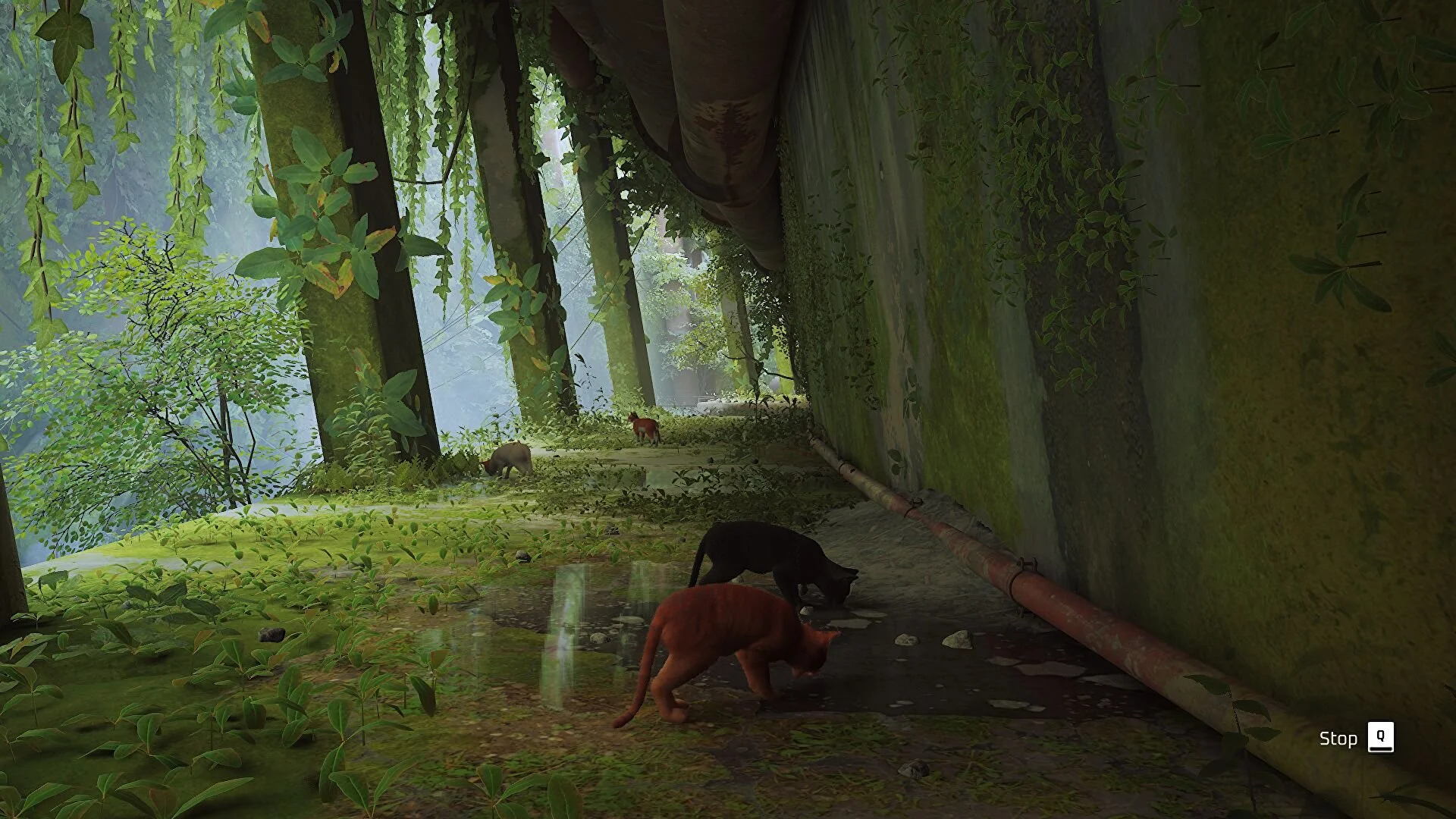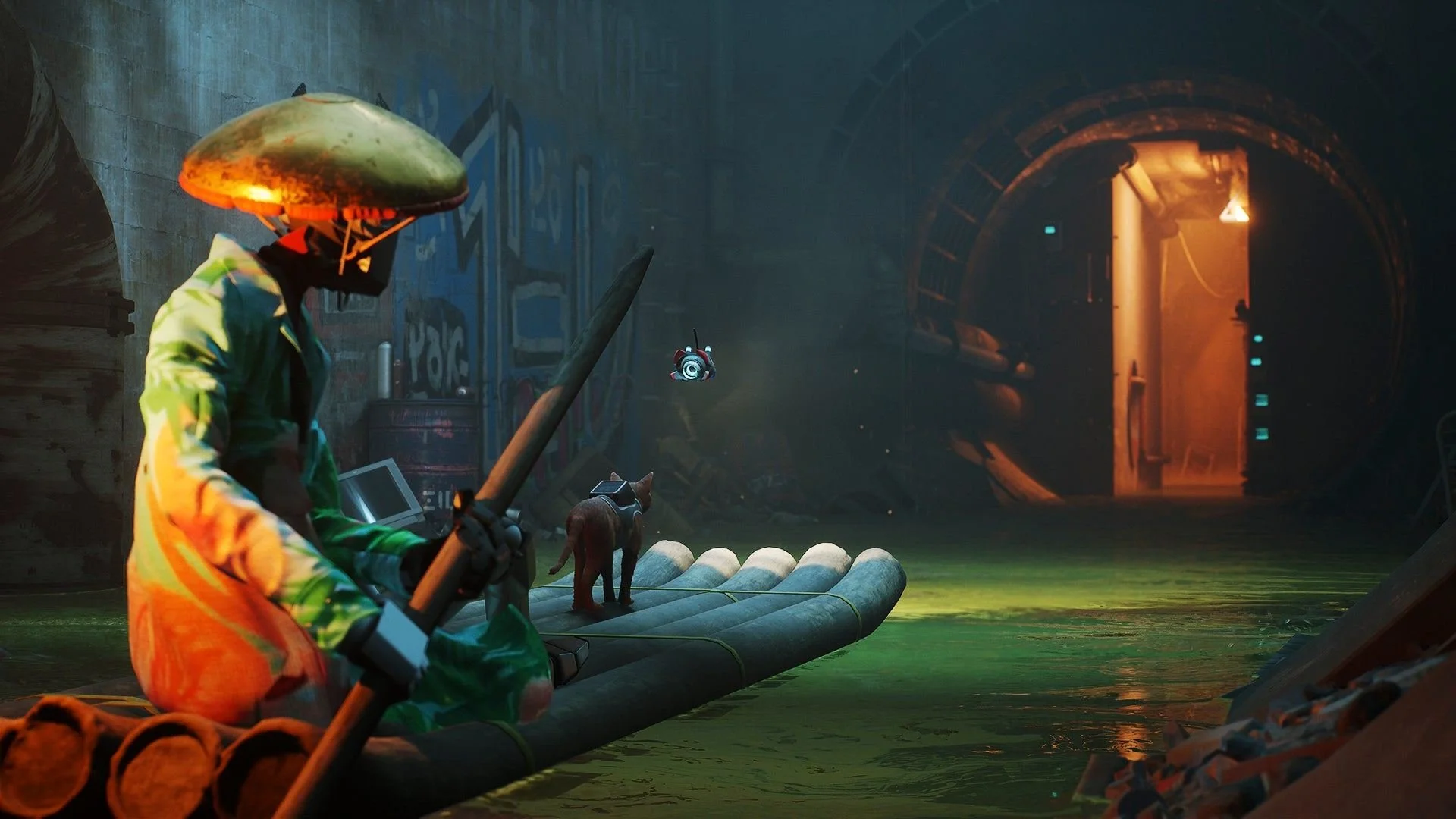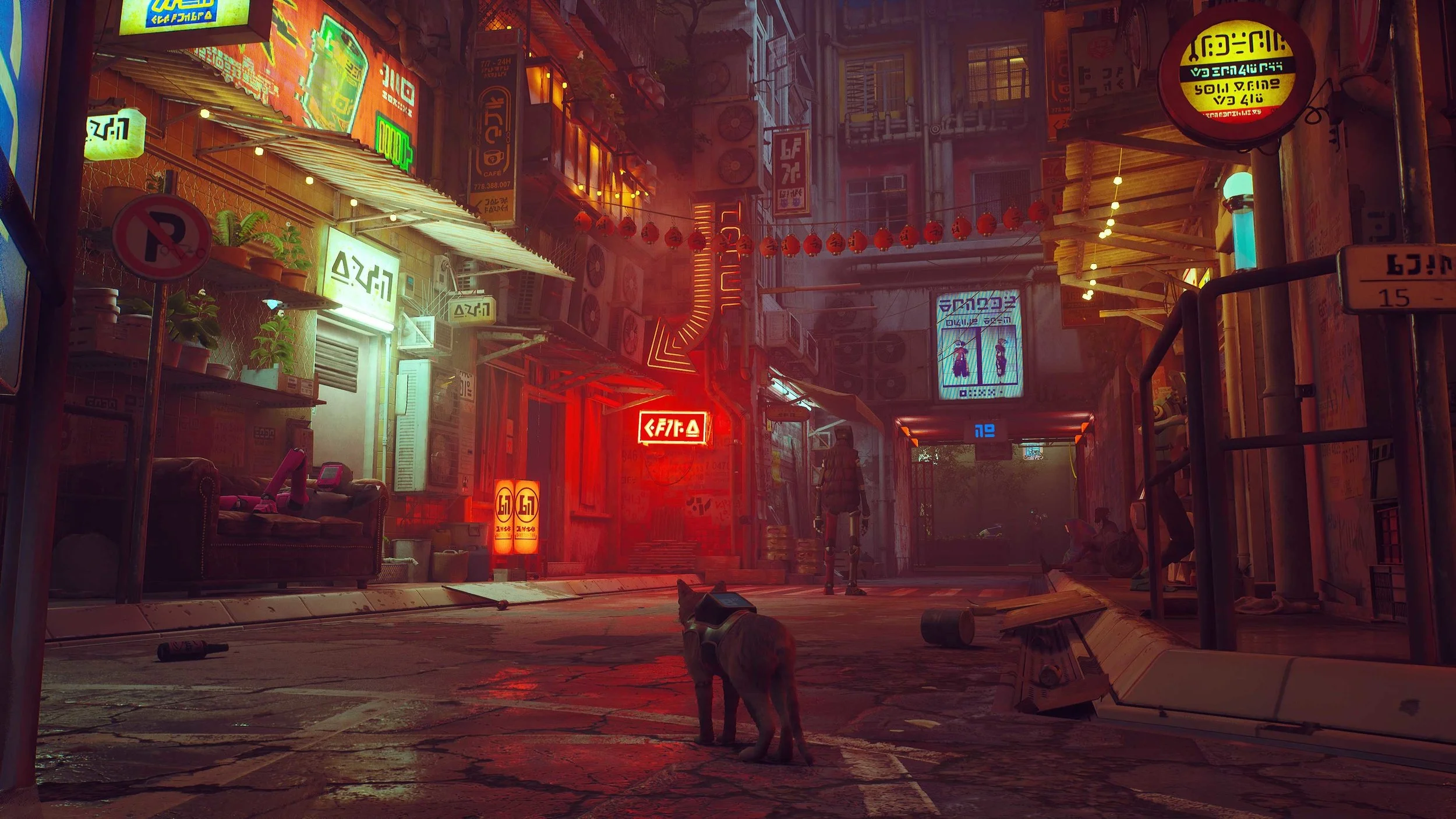Stray Review- A ‘Cat’ Game And So Much More
Cat game. You play as a cat. You can meow on command. You can do little jumps as a little cat. You are a cat. Although I do believe Elden Ring is a pretty good game to come out of 2022, as far as I know, there is no option to play as a cat. Take a second and think of your favourite game ever made. Now imagine that but you can be a cat. It takes it from a 10 to a 100 right? Jokes aside (although not really), Stray is excellent. With excellent environments, a surprisingly outstanding soundtrack, and limited but great feeling gameplay, this kitty simulator is much more than what it initially seems.
Story
Stray’s story is a weird one. It’s really quite simple: you are a cat that gets separated from his/her friends and falls into a post-apocalyptic walled-off city home to robots. Although you initially seek a safe haven from mutant-like blobs in a hostile environment, the story soon develops into a grand quest to escape (and maybe even save) the residents of this ‘dead’ city. I don’t want to spoil much more, but just know that Stray is very fast-paced when moving between its plot beats. You quickly move from location to location, with a slight exception towards the middle of the game. This certainly has its advantages as well as its disadvantages. On the one hand, this allows every character and area to feel unique and interesting compared to its predecessor, but on the other hand, this causes a sort of narrative whiplash where it's hard to connect to any one character (apart from the protagonist cat of course). However, this isn’t necessarily a bad thing. The characters that Stray introduces do serve their purpose well and are more of a tool to move the player along than anything else. In this vein, they serve their purpose well, but it does leave one wondering what would happen if the developers spent just a little more time on the robotic friends you meet along the way.
This fast-paced plot makes way for a short but sweet runtime of around 4-6 hours, depending on how thorough you are with collectibles. I would say that this is a perfect length for a game of this kind. It certainly feels like more of an experience than anything else- and one that does grip the player throughout the whole ride. As mentioned above, you may not get too attached to any supporting character but you do certainly get attached to the little orange cat you play throughout the whole experience. Despite not being able to talk, this protagonist is surprisingly animated and vocal (especially with the incredibly dedicated meow button). This allows for the journey to remain engaging, without boring the player too much in one given area. Despite following just one cat, Stray manages to mostly succeed in providing a compelling narrative right until the end.
Gameplay
Stray is more of a puzzle game than anything else. Although the bulk of the adventure is spent jumping from rooftop to rooftop, (although not in a traditional Mario-esque sense- which I’ll touch on later) there are huge chunks dedicated to problem-solving. Without spoiling too much, there is a section in the latter half of the game which tasks you with retrieving three parts of an outfit to progress. Each of these three items has its own intricate paths that you have to follow in order to gain access to them. For example, one requires you to enter a hat shop, but there’s no way in while the shop is being restocked. However, one of the workers is missing so you’re tasked with bringing him back to help. The slight issue here is that you’re a cat, so communication isn’t your strong suit. So, what else can you do but drop a case of beer on top of his back to jolt him awake? After this, he returns to work and you’re able to sneak into the shop by (in a very cat-like way) hiding in one of the boxes to be restocked.
This seems simple (and the solutions to most puzzles in this game usually are), but they manage to remain charming and engaging throughout. By limiting you in size and stature, the game forces you to work ways around obstacles in ways you wouldn’t normally do so in a conventional experience. That brings us to the platforming. In this game, you can’t mess up a jump. You simply press one button to move from one platform to the other. This isn’t ideal since it restricts you so much when it comes to alternate paths and exploration- especially in the more open levels later on in the game. However, this does lead to some of the most satisfying chase sequences to pull off since the Uncharted franchise. One key element lacking (even in these parts of the game) is the stiff jumping mechanics, but there is still an element of timing, and having to choose the optimal path as you're running from bug-like creatures or robot drones feels rewarding. While unconventional, the way that puzzles and platforming are handled is the best way they could have been while avoiding frustration for the player. It may not be the best, but it is serviceable for what it was attempting to achieve. While unfortunate for some, the gameplay takes a backseat to the true draw of this experience: the presentation.
Presentation
The way Stray presents itself is what I consider to be its greatest strength. One of the biggest draws for me (and I presume a lot of people) is visual design. This game looks great, especially on a lower budget than AAA games are used to. From the cat, you play as to the environments you traverse, and even the small details you would usually breeze past- they all look great. Speaking of little components, there are parts in the game that allow you to just sit and soak it all in. Whether it be snuggling up to a relaxed robot or sleeping next to a guitarist who can play a plethora of musical tunes, it really is a disservice to not stop and take in the atmosphere of each area you travel to. Apart from this, it's really impressive to see what this team has achieved graphics-wise, but the praise doesn’t end there. The entire city feels alive- even the parts that you don’t get to visit. It truly feels like every individual in this city lives and breathes (or whatever the robot equivalent of breathing is) with or without you. From the slums in the lower city to the higher-up areas run by malicious drones, every location has its own feel that (although initially visually similar) provides a uniqueness that really draws the player in.
Despite all of this praise, the real winner of this whole experience has to be the music. Every track played adds so much to the atmosphere as you explore and fits the theme of every location you find yourself in perfectly. Matching the cyberpunk city with tinny, synthetic sounds, Stray manages to give you an experience that can instill panic, calm, and wonder all at once. Quite surprisingly, I would say that the music of this game is its best asset- there is not a single (unintentional, anyway) bad track. Whether it's running from evil drones or tip-toeing around as you try to sneak through different areas, Stray nails the tension in its soundtrack that’s needed to bring these scenes to life.
Conclusion
Stray succeeds in the places it needs to: a great setting, amazing soundtrack, and surprisingly engaging puzzles, but that means it does suffer in some other areas. The limited platforming and short story certainly do hold this adventure back- but not by much. All in all, Stray manages to be an exciting romp through a cyberpunk city that never feels stale and provides the player with a surprisingly relaxing experience like no other this year, and I can’t recommend it enough for that. The pros definitely outweigh the cons in this unique cat simulator, and I’m excited to see what this game will set up for the inevitable kitty-like coming in the near future.




